A couple years ago, Graham and I went to Victoria and had one of the best meals of our lives. We went to a restaurant called Bahn Thai, which was recommended to us by and older couple we had met hiking the day prior. It was the most flavourful meal I have ever had. Since then, I have always wanted to go to Thailand to learn how to recreate the meal we had in Victoria.
Unfortunately, none of the food we had was as good a Bahn Thai, but it was still very good.
Thai food is very different than any other country we went to. Many ingredients and dishes taste very different depending on the restaurant or street vendor you go to. This lack of consistency theme was noticed early on. When at its best, Thai food is some of the worlds best. But when its off, and its off a lot, it can dissuade you from trying more. We will talk about this more later, but first, the cooking classes.
I took two cooking classes in Thailand at two very different price points. The discrepancy between the classes highlighted the reasons for the inconsistencies that we were experiencing.
The first class I took was the Le Cordon Bleu Bangkok, with a focus on Thai beef. We made three dishes: Green curry with beef shank, beef tenderloin stir fry with black pepper sauce, and a sun dried beef with hot sauce. The second was in a backyard in Chiang Mai, where we cooked 11 different dishes.
Lets start with Le Cordon Bleu, and the stir fry. The ingredients were not new (soy sauce, black pepper etc.) and I knew how to use a wok. So I had the basics. But not the advanced techniques. Like making a sauce specifically to tenderize the beef. And having the confidence and finesse to cook it all with the wok at internal sun levels of heat. And most importantly, the timings and orders to adding certain spices and sauces so everything comes out as intended. The order of spice addition matters a lot. Step by step, everything was melded together properly to make the best stir fry ever.
The green curry was amazing but also very difficult to make correctly. Green curry paste is composed of galangal, lemon grass, kaffir lime zest, coriander root, lots of chili, garlic, salt, and shrimp paste. And like the stir fry, the order of addition of ingredients matters a lot when making the curry paste (due to the toughness of the ingredients). Elite curry paste also requires the ingredients to be chopped as finely as possible. And then ground in a mortar and pestle forever. But the end result is a carefully constructed medley where every powerful ingredient is in perfect harmony with each other.
When it became time to cook the curry paste, we had to first cook the coconut milk until the oils came out of it. Then the curry paste goes in and gets cooked until their oils are expunged. The rest of the coconut milk follows. Season to taste and it was incredible (which at this point is a game of inches). Very different than any other curry we had in Thailand. There was no one overpowering flavour. Instead there were seven or so, somehow working together.
The final dish was a sun-dried beef with a hot sauce. Fundamentally, I have no idea how to recreate this. That’s not wholly true. I don’t have the patience. Or the equipment. But it tasted like a beef jerky candy. Equally peppery, salty and coriandery. Fantastic.
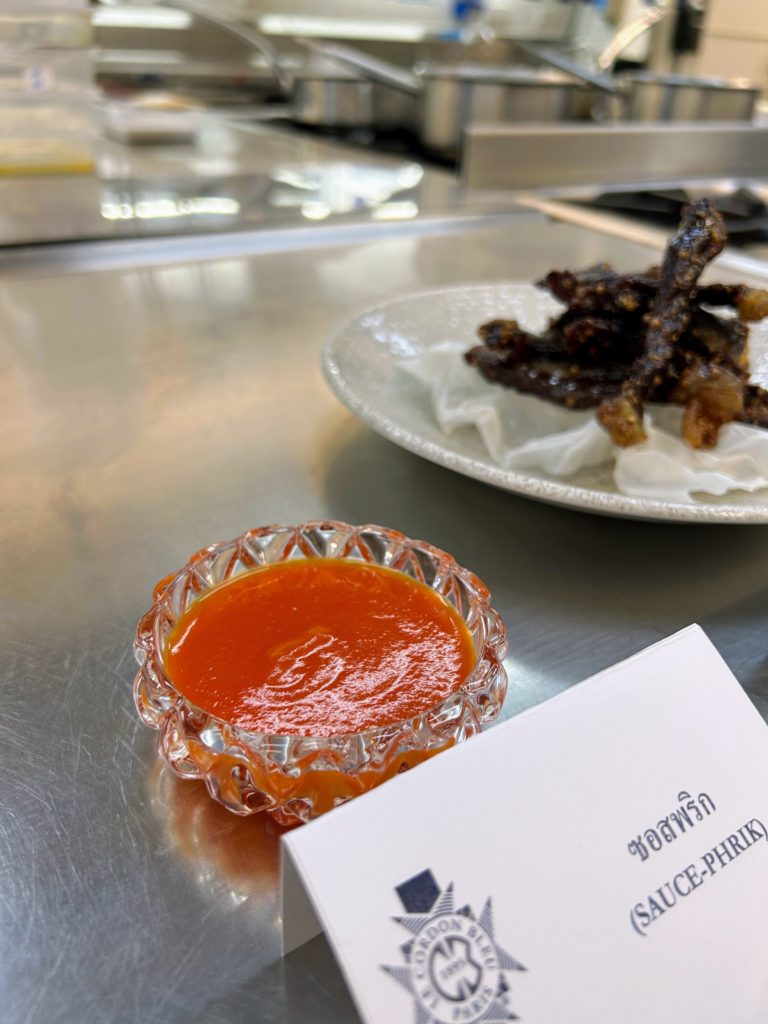
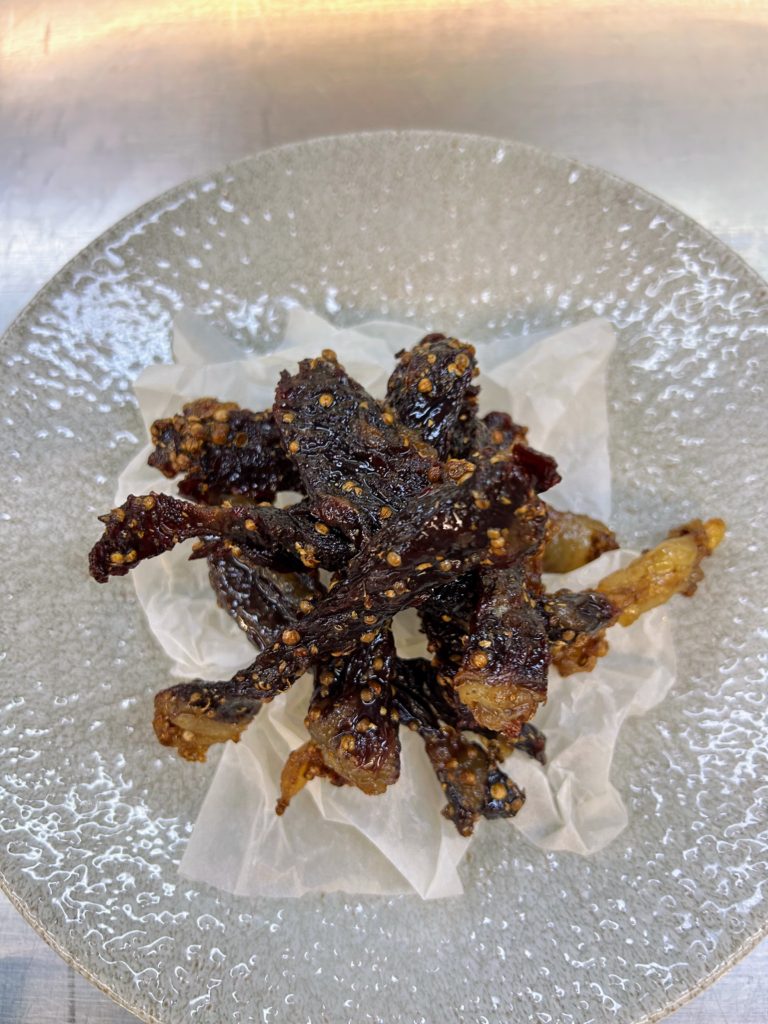
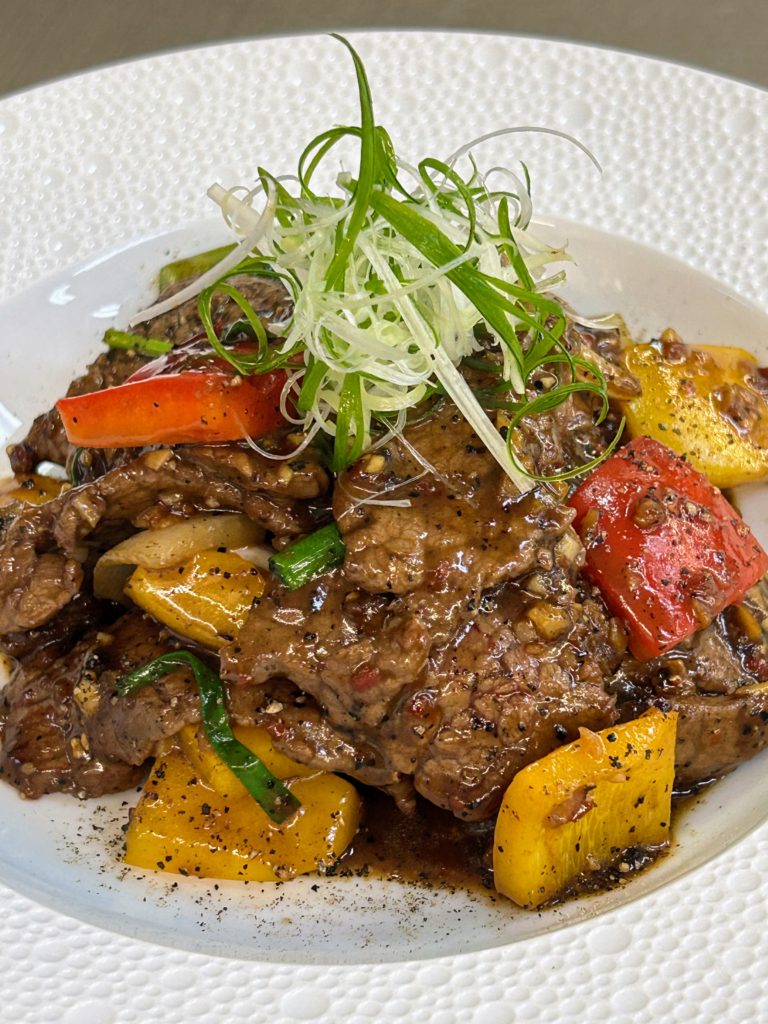
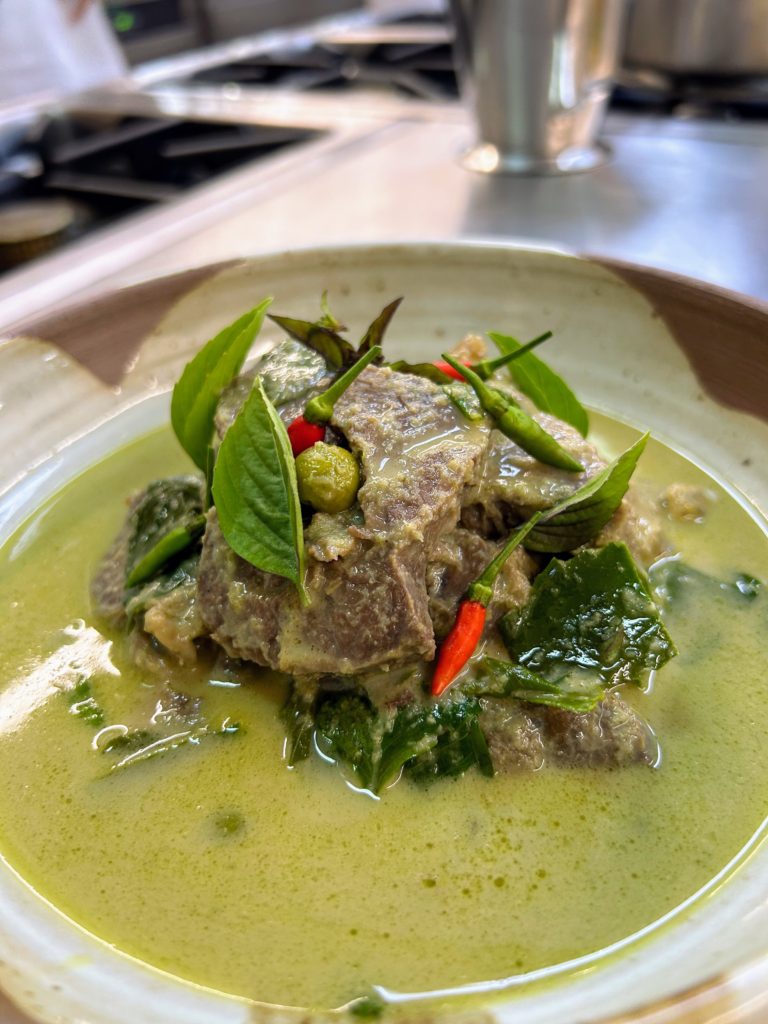
For the second class, we cooked or tasted 11 different dishes. Things like spring rolls, curry, soups, noodles, and mango sticky rice. The quantity over quality approach highlighted what we think is one of the main causations of the inconsistent food we were tasting. Our ingredients were dried, not fresh leading to milder or unbalanced flavours. We didn’t have enough time to properly simmer the ingredients to let the flavours mesh. This is similar to a lot of the restaurants we went to, where there are 15-20 tables always on the go, so finesse gets replaced by speed and efficiency out of necessity. The red curry with dried ingredients was very good though.
As an aside, we got an introduction to Isaan cooking in this class as well. Isaan is a demographic that resides in the north of Thailand. They use a lot of galangal and tofu in their dishes.
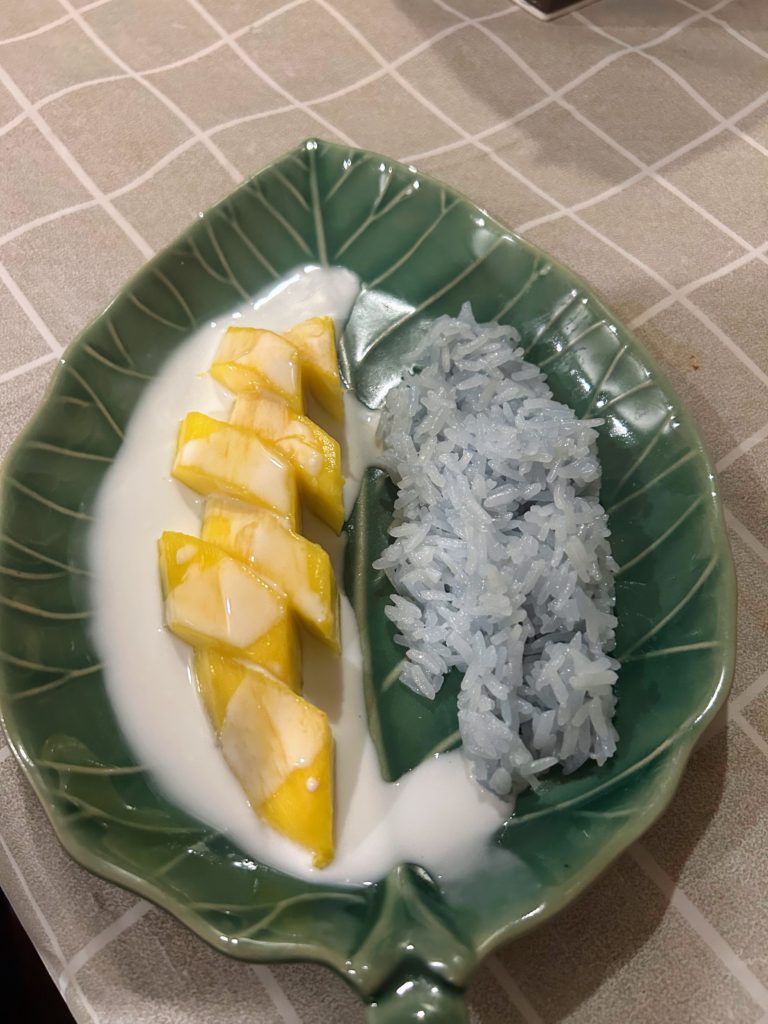
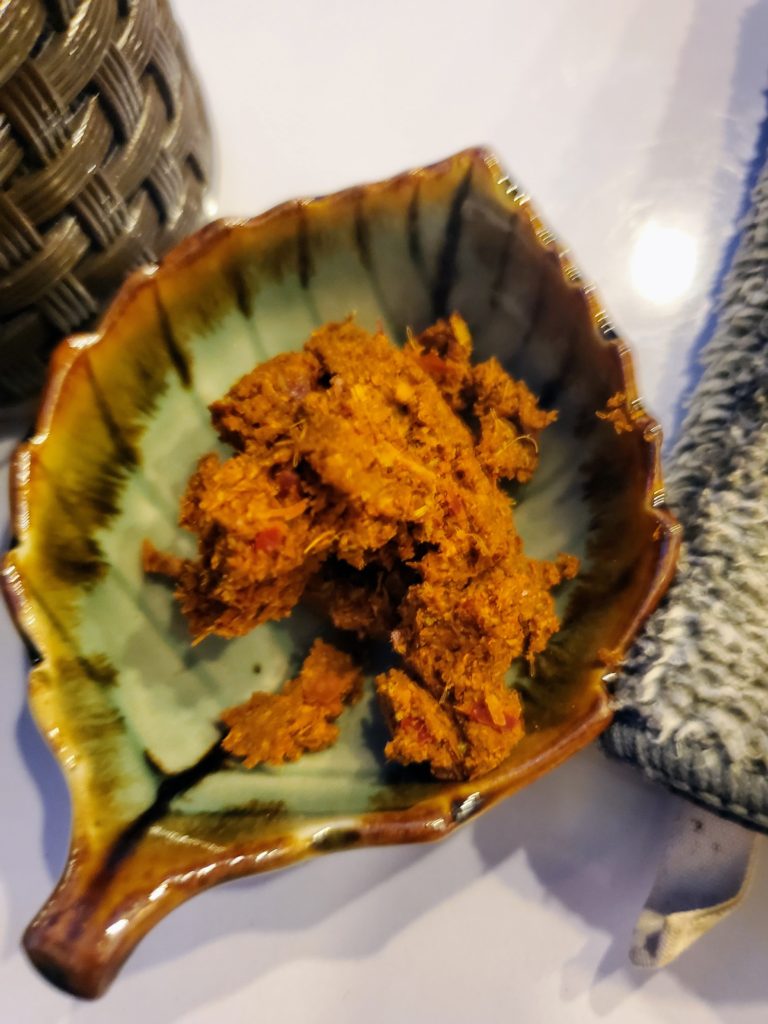
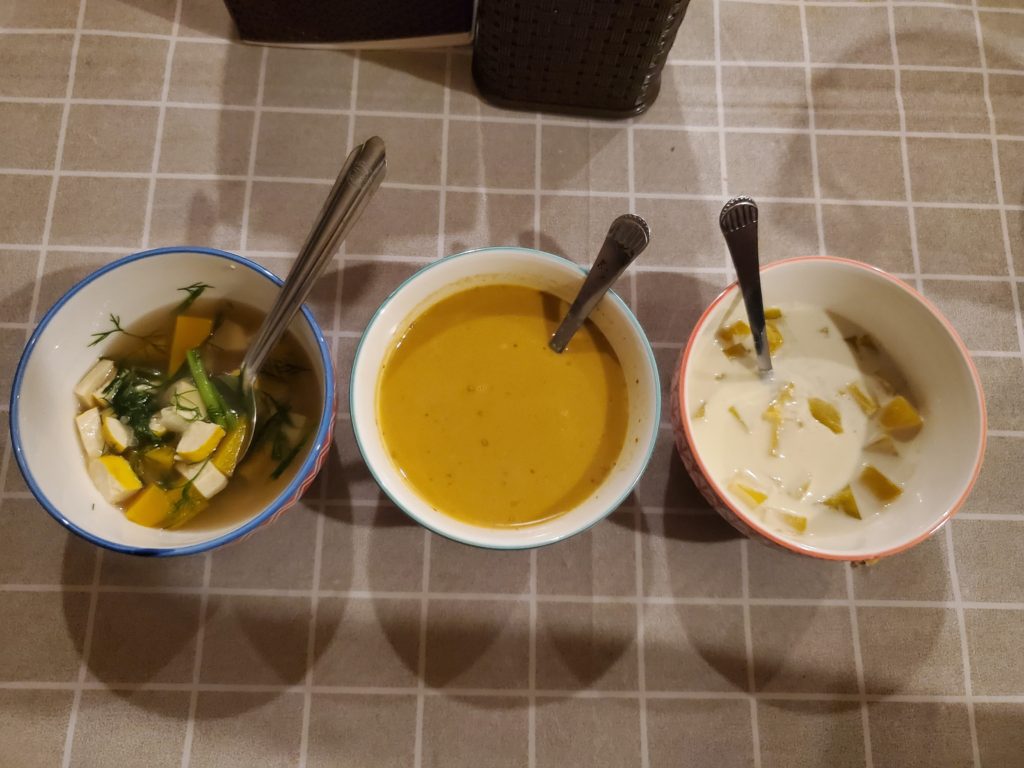
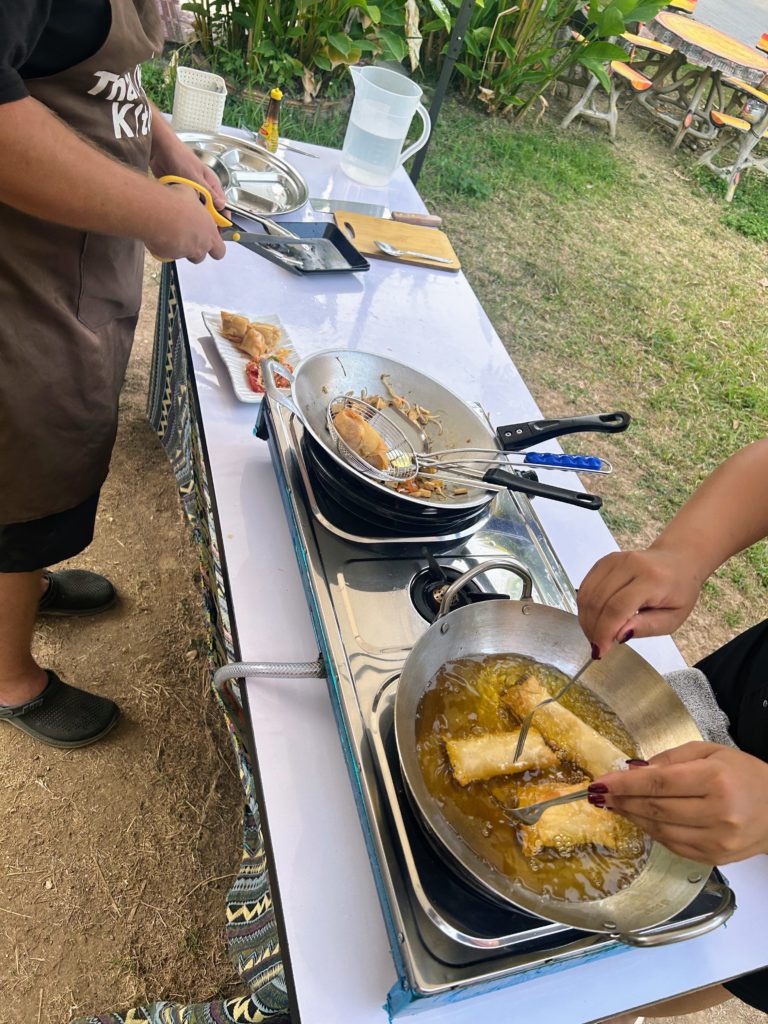
Thai food has a few staple spices and flavours. Things like galangal (similar to ginger), lemongrass, chili, garlic, kaffir lime, and coconut, among others. These are all very strong potent ingredients that in most other cuisines are the main flavour. Thai food puts three or four as the main focus, leading to overwhelming flavour with every bite.
But with great power comes great responsibility. These ingredients are easy to mess up. So great technique, time, and care has to come into play to ensure that the ingredients are given the time they deserve to create consistent, fantastic dishes. And that just doesn’t happen.
I don’t really want to blame the chefs for that though. We spent a lot of our time in heavily touristed areas, and as a result, the restaurants had to cater to a tourists palate. The ramifications of that are massive. Every restaurant within walking distance of a tourist district is a combination of Thai/ Western. They have to offer burgers to survive. Most are foreign owned as well, and though this may be conjecture, I have to imagine the owners palate heavily influences the Thai chefs.
We unknowingly had set ourselves up for failure trying to have that Bahn Thai experience in Thailand. We did not go to the right districts to have a perfectly balanced Tom Kha soup. It wasn’t economically feasible for the restaurants in the areas we were staying to provide it. I know it exists and is possible. But its off the Banana Pancake route (which, ironically, is named for all of the western breakfasts provided in these districts due to tourist demand.) and we didn’t venture far off Thailand.
It wasn’t all doom and gloom though. There were a couple highlights. Like Khao Soi, a chicken noodle soup Chiang Mai specialty that we ordered on repeat. Or boat noodles, an intense umami forward meat and noodle soup. These are dishes we don’t get at home, but should.
I am very excited to go home and recreate the dishes learned in the more simple cooking class, with the techniques from Le Cordon Bleu. With enough time and trial, Bahn Thai could be made.

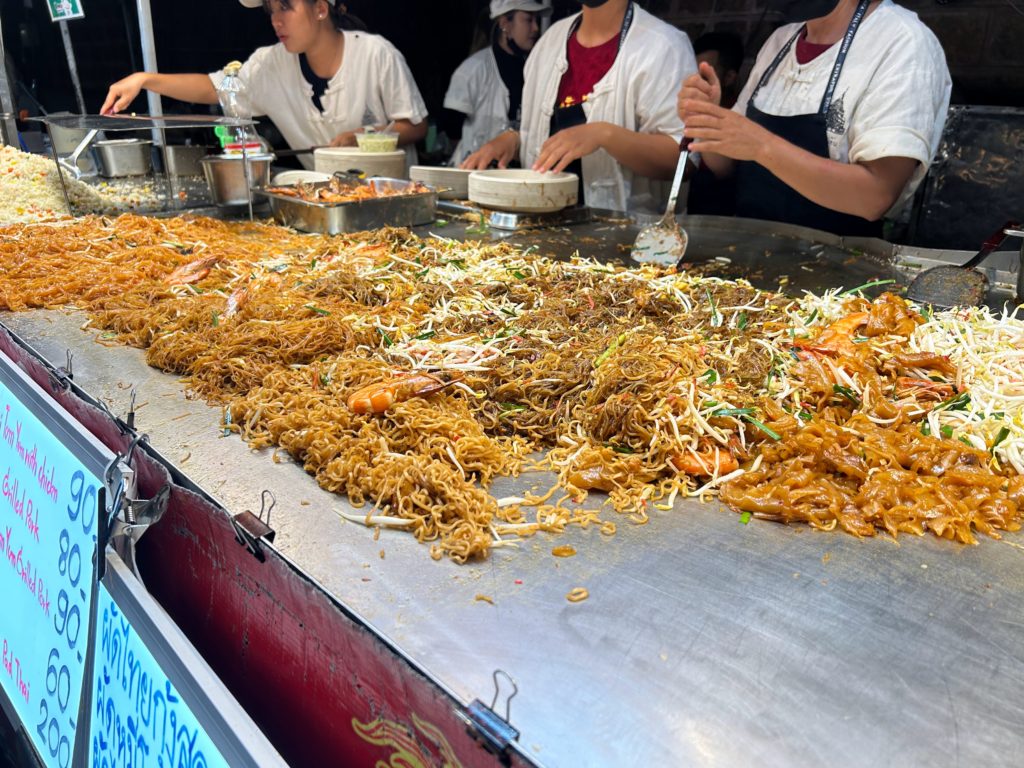
The presentation of the dishes is so lovely. Looking forward to your return to Canada so we can sign up for your cooking classes Camryn!
Good on you Cam for pushing the culinary envelope outside the comfort zone. You obviously have an inclination for these things, good to amp it up where/when u can.
Wok fresh street food can be hit or miss, always worth a try. Keep on it.
If you’re looking for a great Kerala book, then try “The Covenant of Water” by Abraham Verghese, is a lengthy tome but well worth the read. Tally Ho
can’t wait to try… I’ll be the clean up crew! xo
I’m just very excited to have you home. The food will just be a bonus.